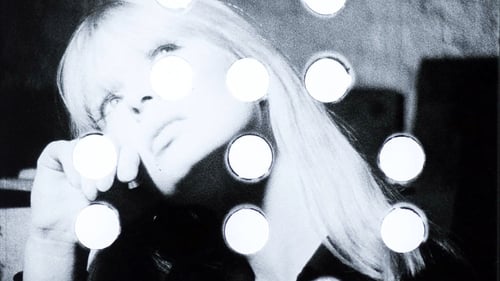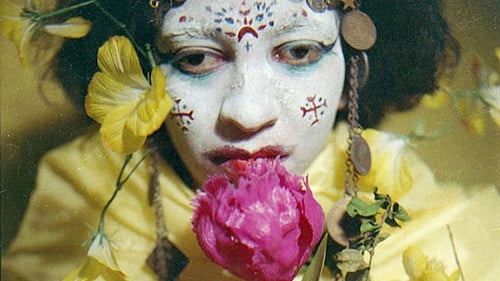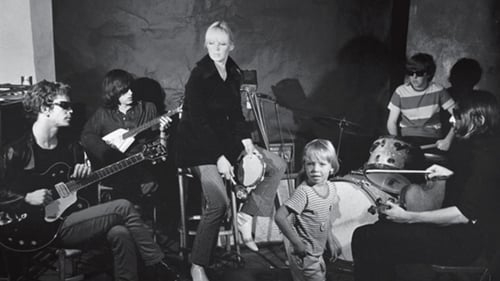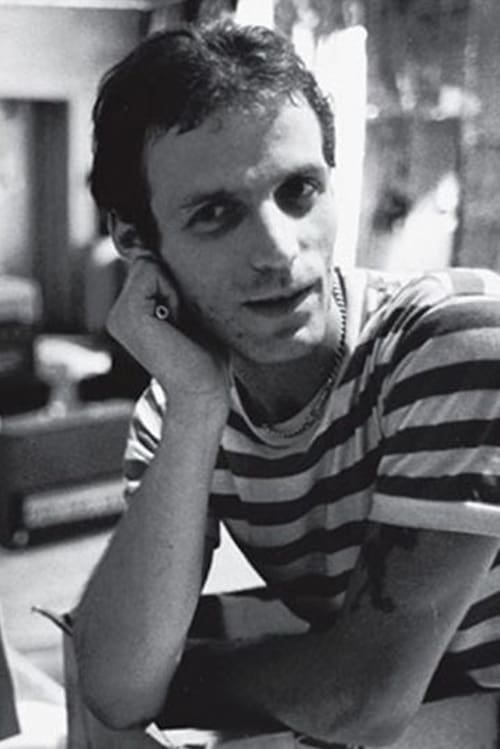Billy Name
Nascimento : 1940-02-02, Poughkeepsie, New York
Morte : 2016-07-18
História
William George Linich, known professionally as Billy Name, was an American photographer, filmmaker, and lighting designer. He was the archivist of The Factory from 1964 to 1970.

Self (voice)
Descubra o legado dessa banda emblemática no seu primeiro grande documentário. Dirigido por Todd Haynes, com o espírito de vanguarda da época, a história caleidoscópica combina entrevistas exclusivas com imagens de arquivo surpreendentes.

Himself
Between 1964 and 1966, Andy Warhol shot nearly 500 Screen Tests, beautiful and revealing portraits of hundreds of different individuals, from Warhol superstars and celebrities to friends or anyone he thought had "star potential". All visitors to his studio, the Factory. Subjects were captured in stark relief by a strong keylight, and filmed by Warhol with his stationary 16mm Bolex camera on silent, black and white, 100-foot rolls of film. The resulting two-and-a-half-minute film reels were then screened in slow motion, resulting in a fascinating collection of four-minute masterpieces that startle and entrance, mesmerizing in the purest sense of the word. Songwriters Dean Wareham and Britta Phillips, formerly of the band Luna and currently recording as Dean & Britta, incorporated original compositions as well as cover songs to create new soundtracks for the 13 films.

Himself
Esther Robinson's portrait of her uncle Danny Williams, Warhol's onetime lover, collaborator and filmmaker in his own right, offers a exploration of the Factory era, an homage to Williams's talent, a journey of family discovery and a compelling inquiry into Williams's mysterious disappearance at age 27.

Himself
In this entrancing documentary on performance artist, photographer and underground filmmaker Jack Smith, photographs and rare clips of Smith's performances and films punctuate interviews with artists, critics, friends and foes to create an engaging portrait of the artist. Widely known for his banned queer erotica film Flaming Creatures, Smith was an innovator and firebrand who influenced artists such as Andy Warhol and John Waters.

Himself
A look at avant-garde filmmaker Marie Menken.

Himself
Andy Warhol, one of the most influential artists of the 20th century (who also coined the immortal catchphrase "In the future, everyone will be famous for 15 minutes"), gets the definitive treatment. This film includes a look into his inner circle and examines both his artistic and personal impact on society. From day-glo Marilyns and Elvises to Campbell's Soup cans to the groovy 1960s and '70s, step into the limelight of the Warhol world.

Himself
Follows John Cale, a Welsh musician and producer, who founded the legendary 60s and 70s NY rock band - the Velvet Underground, with Lou Reed. Cale delved into other mainstream and experimental music genres as well.

Himself
A look into the many lives of Christa Päffgen, otherwise known as Nico; from cutie German mädchen to the first of the supermodels, to glamorous diva of the Velvet Underground, to cult item, junkie and hag. Many faces for the same woman, whom, you realize, just couldn't bring herself to care enough to live.

Himself
Documentary on Andy Warhol's cinema of the sixties, made for Channel 4 in association with The Factory, MOMA and the Whitney Museum of Art and in collaboration with Simon Field.

Himself
The first major profile of the American Pop Art cult leader after his death in 1987 covers the whole of his life and work through interviews, clips from his films, and conversations with his family and superstar friends. Andy Warhol, the son of poor Czech immigrants, grew up in the industrial slums of Pittsburgh while dreaming of Hollywood stars. He went on to become a star himself.

Photographed entirely in color, Four Stars was projected in its complete length of nearly 25 hours (allowing for projection overlap of the 35-minute reels) only once, at the Film-Makers' Cinematheque in the basement of the now-demolished Wurlitzer Building at 125 West 41st Street in New York City. The imagery in the film is dense, wearying and beautiful, but ultimately hard to decipher, for, in contrast to his earlier, and more famous film Chelsea Girls, made in 1966, Warhol directed that two reels be screened simultaneously on top of each other on a single screen, rather than side-by-side.

Himself
Documentarians Juan Drago and Bruce Torbet follow a surprisingly relaxed and open Andy Warhol, at the peak of his powers in 1965 and 1966, around his bustling original "Factory" in midtown Manhattan. Warhol experiments with an early videotape machine, recording a beautiful, laughing Edie Sedgwick - his "superstar" of the moment - for the video portion of "Outer and Inner Space," his filmed record of the "live" Sedgwick juxtaposed against her video image on an adjacent monitor. Also captured is a Warhol show at the Leo Castelli gallery, including the famous Mylar "Clouds," as various unnamed art dealers and critics muse in voiceover about the meaning and significance of Warhol's work.

Himself
The film depicts a rehearsal of The Velvet Underground including Nico, and is essentially one long loose improvisation.

Andy Warhol’s film Lupe (1966) restages the mythic account of one celebrity’s suicide as a strategic ploy to envision another’s. Lupe is known to be Warhol’s take on Kenneth Anger’s own fabricated account of Lupe Vélez’s (also known as Hollywood’s ‘Mexican Spitfire’) suicide; Edie Sedgwick is cast as Vélez living out her last morning, evening and final dramatic exit. (berlinfilmjournal.com)

Self
The films were made between 1964 and 1966 at Warhol's Factory studio in New York City. Subjects were captured in stark relief by a strong key light, and filmed by Warhol with his stationary 16mm Bolex camera on silent, black and white, 100-foot rolls of film at 24 frames per second. The resulting two-and-a-half-minute film reels were then screened in 'slow motion' at 16 frames per second.

(voice)
Jean Harlow-lookalike Harlot (Mario Montez), Gerard Malanga, Philip Fagan, and Carol Koshinskie (with a cat) sit in a room eating bananas as the off-screen voices of Billy Name, Ronald Tavel, and Harry Fainlight discuss various topics.

Inspired by a 1962 NYPD pamphlet entitled ‘The Thirteen Most Wanted [Men]’. Warhol transformed it from ‘most wanted men’ into ‘most beautiful boys’, and then began to film the very first Screen Tests, continuing to film for the series into early 1966, totalling more than 13 Screen Tests.

Himself
One of two(?) 1964 screen tests of Linich. Runs 4 minutes, 24 seconds in length.

Shot in slow motion, with tiny bits of stagy lighting that seem to crumble and flake like cookies, Billy Name gives one of his notorious haircuts--and Warhol turns it into a homoerotic performance, a dance of adoration and control, a triangle of looking and keeping-at-bay, that is a slightly dullish but finally essential contribution to Warhol's long project of bringing portraiture technologies to moviemaking.

Batman Dracula is a 1964 black and white American film produced and directed by Andy Warhol, without the permission of DC Comics. The film was screened only at Warhol's art exhibits. A fan of the Batman series, Warhol made the movie as a homage. Batman Dracula is considered to be the first film featuring a blatantly campy Batman. The film was thought to have been lost until scenes from it were shown at some length in the documentary Jack Smith and the Destruction of Atlantis.

Himself
Billy Name screen test by Andy Warhol.

Himself
The couch at Andy Warhol's Factory was as famous in its own right as any of his Superstars. In Couch, visitors to the Factory were invited to "perform" on camera, seated on the old couch. Their many acts-both lascivious and mundane-are documented in a film that has come to be regarded as one of the most notorious of Warhol's early works. Across the course of the film we encounter such figures as poets Allen Ginsberg and Gregory Corso, the writer Jack Kerouac, and perennial New York figure Taylor Mead.
![Screen Test [ST194]: Billy Linich](/assets/images/no-backdrop.png)
Himself
One of two(?) 1964 screen tests of Linich. Runs 4 minutes, 30 seconds in length.





